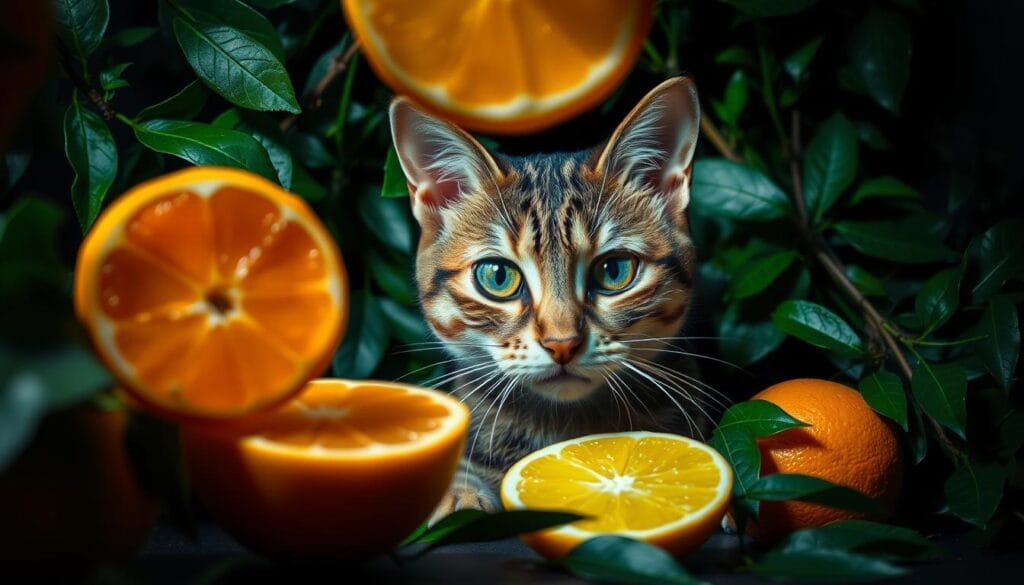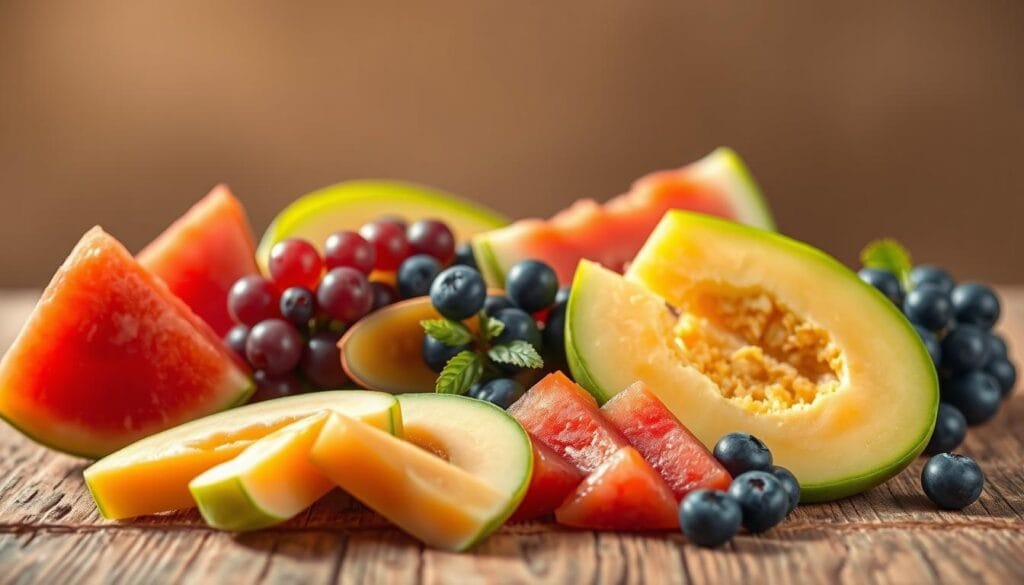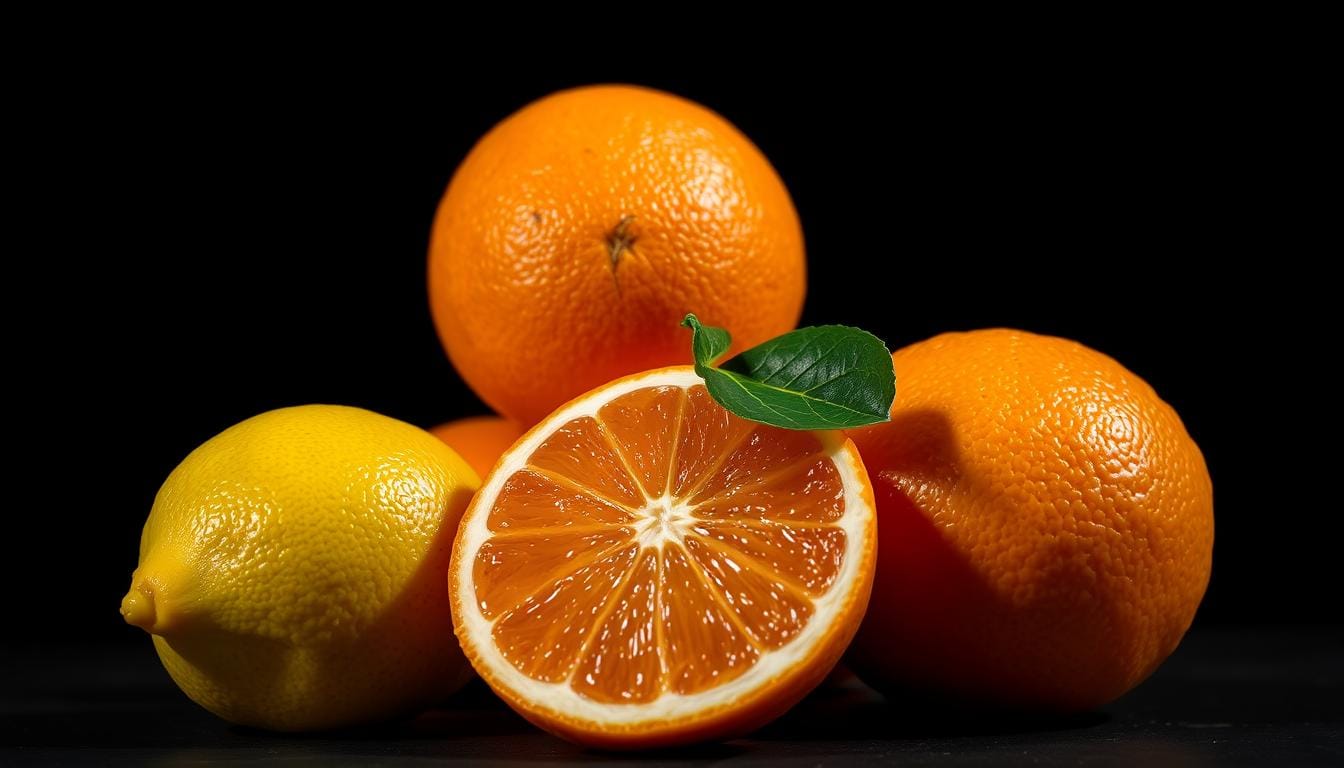Can Cats Eat Oranges? The Surprising Truth
Imagine your curious feline companion pawing at a slice of orange you dropped while snacking. Your first thought might be to share this juicy treat—after all, it’s packed with vitamin C for humans. But what’s healthy for you could spell danger for your pet.
Table of Contents
Oranges—and all citrus fruits—contain compounds like d-limonene and linalool. These essential oils disrupt a cat’s digestive system, causing vomiting, diarrhea, or worse. Even small amounts of peel or seeds pose risks due to their concentrated toxicity.
Your furry friend’s biology differs vastly from yours. Their metabolism can’t process certain plant-based compounds found in everyday foods. This makes many human snacks unsafe, despite seeming harmless.
Understanding these differences is critical for responsible pet ownership. Always consult a veterinarian before introducing new foods. Vigilance ensures your companion stays healthy and avoids accidental harm from toxic items.
Understanding Feline Nutrition and Dietary Needs
Meat isn’t just a preference for your pet—it’s a biological necessity. Unlike humans, felines evolved as obligate carnivores, requiring animal-based proteins to thrive. Their bodies lack enzymes to break down plant matter efficiently, making fruits and vegetables ineffective energy sources.
Commercial cat food provides tailored nutrition with these unique requirements in mind. High-quality formulas contain taurine, arachidonic acid, and preformed vitamin A—nutrients cats can’t synthesize from plant materials. Without these essentials, your companion risks heart issues, vision loss, or skin disorders.
Three critical differences shape feline digestion:
- Short intestinal tracts optimized for meat processing
- Limited ability to convert beta-carotene to vitamin A
- High protein requirements for organ function
Can Cats Eat Oranges? What You Need to Know
While oranges offer nutritional benefits for humans, they’re strictly off-limits for felines. The answer is clear: these citrus fruits contain multiple substances harmful to pets. Even small amounts of peel, pulp, or seeds can trigger severe reactions due to their concentrated toxins.

Essential oils like d-limonene and linalool disrupt digestive systems, leading to vomiting or diarrhea. Citric acid poses another threat—felines lack enzymes to process it safely. Mild exposure might cause drooling or stomach irritation, while larger quantities risk organ damage.
Psoralens and furocoumarins add another layer of danger. These chemicals heighten skin sensitivity to sunlight, potentially causing blistering or burns after ingestion. Symptoms often appear within hours, worsening with UV exposure.
Many owners mistakenly assume “natural” equals safe. However, a fruit’s benefits for people don’t translate to pets. Felines derive no nutritional value from citrus, and their bodies can’t neutralize plant-based toxins effectively.
Always prioritize vet-approved treats over human foods. Quick action matters if accidental ingestion occurs—contact your veterinarian immediately for guidance.
Why Citrus Fruits Are Hazardous for Your Feline
The same compounds that give citrus its tangy flavor pose serious risks to your pet’s well-being. Lemons, limes, and grapefruits contain concentrated toxins in their peels and seeds—substances your companion’s body can’t process safely.
- Higher toxin concentrations in fruit skins versus flesh
- Lack of feline liver enzymes to neutralize plant compounds
- Delayed symptoms masking urgent medical needs
Essential Oils and Citric Acid Risks
Peels contain 10x more essential oils than fruit pulp. These oils bind to nerve receptors, disrupting digestion and coordination. Citric acid overloads kidney filtration systems, potentially causing crystal formation in urine.
| Citrus Part | Toxic Compound | Risk Level |
|---|---|---|
| Peel | Limonene | High |
| Seeds | Psoralens | Severe |
| Leaves | Linalool | Moderate |
| Flesh | Citric Acid | Low |
Underlying Toxic Compounds in Citrus
Psoralens create photosensitivity—even brief sun exposure after ingestion causes skin burns. Limonene accumulates in fatty tissues, leading to gradual neurological damage. These substances remain active for weeks after consumption.
Veterinary studies show 200mg/kg of citrus oil causes tremors. For a 10-pound pet, that’s less than 1/4 teaspoon. Always store citrus products securely and wipe surfaces after food prep.
The Impact of Citric Acid and Essential Oils on Cat Health
Your kitchen counter might hold hidden dangers for your curious pet. Citrus fruits contain substances that interact differently with feline biology compared to humans. Let’s explore how specific compounds disrupt vital systems.
How Citric Acid Affects Your Cat’s System
Feline stomachs maintain a pH balance optimized for digesting meat. Citric acid lowers this acidity, triggering irritation and inflammation. This imbalance leads to vomiting, diarrhea, and nutrient absorption issues.
Kidneys face additional strain when processing acidic compounds. Over time, repeated exposure may contribute to urinary crystals or renal stress. Even small doses can overwhelm their sensitive filtration systems.
The Role of Essential Oils in Toxicity
Limonene and linalool—natural oils in citrus peels—bind to nerve cells. These substances bypass normal metabolic pathways, reaching the brain through the bloodstream. Neurological symptoms like tremors or seizures often follow.
- Disrupted cellular communication in the nervous system
- Liver overload from processing concentrated oils
- Delayed symptoms masking urgent medical needs
Quick intervention matters. If exposure occurs, contact your vet immediately—these compounds progress rapidly through vital organs.
Recognizing Signs of Citrus Poisoning in Cats
Spotting unusual behavior in your pet could signal trouble after citrus exposure. Early detection matters—some symptoms escalate rapidly. Watch for these key indicators within 24 hours of suspected ingestion.
Gastrointestinal distress often appears first. Vomiting and diarrhea typically develop within 2-4 hours. Other digestive signs include excessive drooling, reduced appetite, or visible abdominal discomfort.
| Symptom | Timeframe | Severity |
|---|---|---|
| Vomiting | 2-4 hours | Moderate |
| Muscle tremors | 6-12 hours | Severe |
| Photosensitivity | 12-24 hours | High |
| Seizures | 24+ hours | Critical |
Neurological changes demand immediate action. Look for lethargy, depression, or sudden weakness. Advanced poisoning causes muscle tremors and seizures—these require emergency vet care.
Skin reactions might surprise you. Sunlight exposure after ingestion can trigger dermatitis—redness, swelling, or blisters. Keep affected pets indoors and contact your veterinarian immediately if multiple symptoms appear.
Safe Treats and Alternative Foods for Your Cat
Exploring healthy snack options for your pet requires understanding their unique dietary needs. While meat remains essential, occasional treats can add variety when chosen carefully. Always prioritize safety and moderation to avoid digestive issues.

Fruit Treats in Moderation
Limit fruit intake to 10% of your pet’s daily calories. Their carnivorous systems process plant matter inefficiently. Safe options include:
- Apples (seedless slices): Provide fiber and vitamin C
- Blueberries (mashed): Rich in antioxidants
- Cantaloupe (diced): Attracts felines with meat-like aroma
Remove seeds and peels to prevent choking. Introduce new items gradually—watch for stomach upset.
Human Foods That Are Feline-Friendly
Some kitchen staples make better snacks than citrus. Consider these vet-approved choices:
| Food | Benefit | Serving Tip |
|---|---|---|
| Cooked chicken | High-quality protein | Shred, no seasoning |
| Pumpkin purée | Digestive aid | 1 tsp mixed with food |
| Steamed salmon | Omega-3 fatty acids | Boneless, skinless |
Always consult your veterinarian before adding new items. Immediate discontinuation is crucial if adverse reactions occur.
Veterinarian Insights on a Balanced Feline Diet
Your pet’s nutritional needs require professional guidance more than guesswork. Veterinarians stress that tailored meal plans prevent health complications better than generic solutions. Age, weight, and medical history all influence what your companion should eat.
Prescription diets often become necessary for chronic conditions. Pets with kidney issues might need low-phosphorus formulas, while diabetic felines benefit from controlled carbohydrate intake. These specialized foods address specific biological needs standard options can’t match.
Three factors determine safe snacking:
- Existing allergies or food sensitivities
- Current medications that interact with nutrients
- Digestive system maturity in kittens versus seniors
Vets caution against sharing human foods without consultation. That harmless-looking cheese cube could disrupt a lactose-intolerant pet’s stomach. Regular checkups help track dietary impacts on organ health and energy levels.
Build trust with a vet who knows your pet’s unique profile. They’ll recommend adjustments during life stages like pregnancy or recovery from illness. This partnership ensures meals support longevity rather than risking preventable emergencies.
Comparing Oranges with Other Toxic Foods for Cats
Many common kitchen items threaten pet health through different biological pathways. While citrus fruits like oranges contain neurotoxic oils, other foods attack organs or blood cells. Recognizing these variations helps prioritize safety in homes with curious companions.
Grape Toxicity Versus Citrus Risks
Grapes and raisins also contain tartaric acid—a compound causing sudden kidney failure in small doses. Unlike citrus oils that trigger neurological symptoms, this toxin damages filtration systems rapidly. Even two grapes could prove fatal without immediate treatment.
Onions and garlic present separate dangers through Allium compounds. These substances destroy red blood cells gradually, leading to life-threatening anemia. Comparatively, toxic citrus poisoning shows faster vomiting but less cumulative damage than Allium exposure.
Severity depends on ingestion amounts and response speed. Grapes demand emergency care within hours, while onion effects surface days later. Store all hazardous foods securely and learn species-specific risks to protect your pet effectively.
- Can Cats Eat Oranges? The Surprising Truth
- Can Cats Eat Blueberries? Benefits and Risks Explained
- Can Cats Eat Grapes? Vet Answers and Safe Alternatives
- Can Cats Eat Mango? What Every Cat Owner Should Know
- Can Cats Eat Pineapple? Safety Tips for Cat Owners

